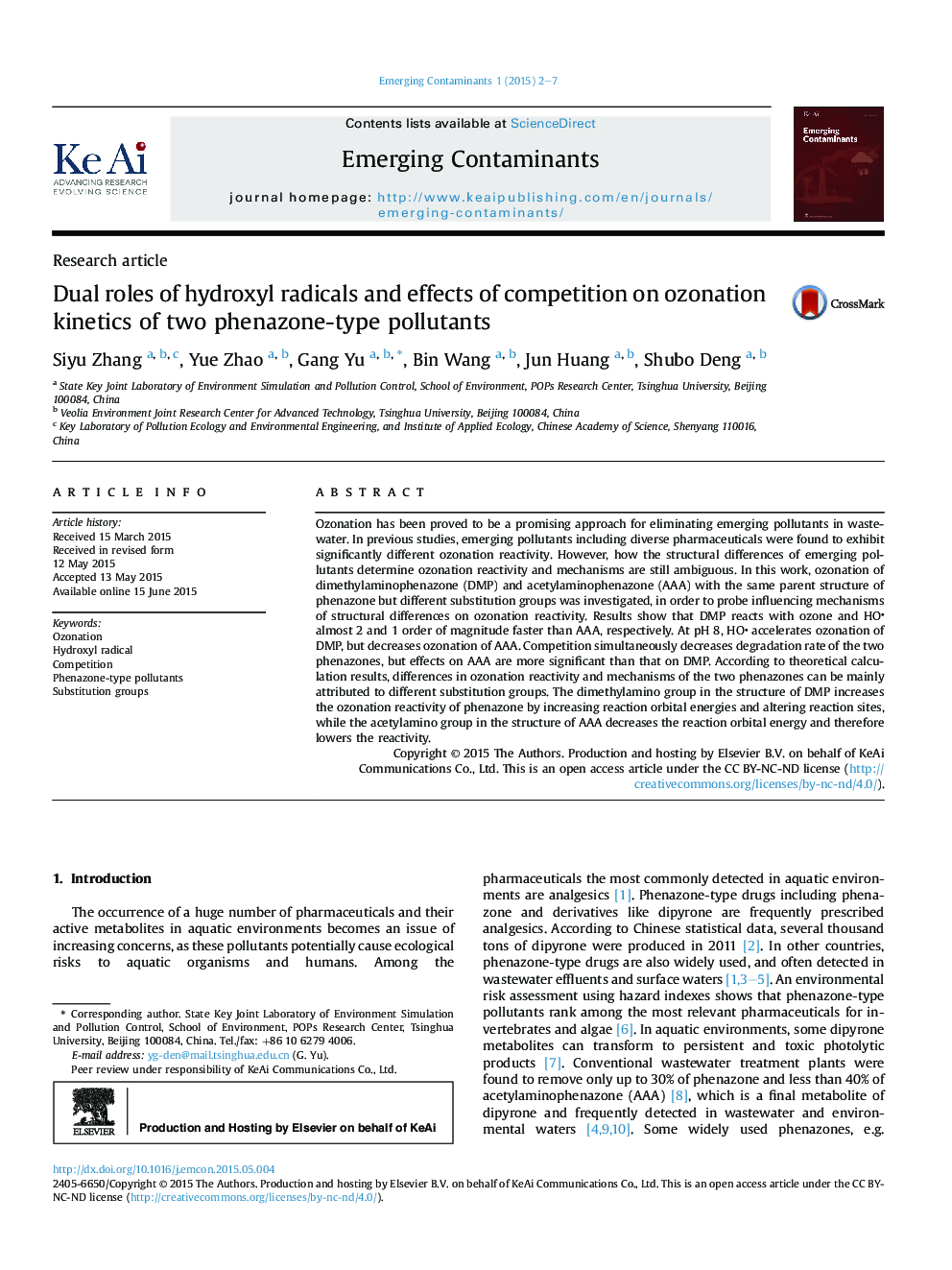| Article ID | Journal | Published Year | Pages | File Type |
|---|---|---|---|---|
| 4422656 | Emerging Contaminants | 2015 | 6 Pages |
Ozonation has been proved to be a promising approach for eliminating emerging pollutants in wastewater. In previous studies, emerging pollutants including diverse pharmaceuticals were found to exhibit significantly different ozonation reactivity. However, how the structural differences of emerging pollutants determine ozonation reactivity and mechanisms are still ambiguous. In this work, ozonation of dimethylaminophenazone (DMP) and acetylaminophenazone (AAA) with the same parent structure of phenazone but different substitution groups was investigated, in order to probe influencing mechanisms of structural differences on ozonation reactivity. Results show that DMP reacts with ozone and HO almost 2 and 1 order of magnitude faster than AAA, respectively. At pH 8, HO accelerates ozonation of DMP, but decreases ozonation of AAA. Competition simultaneously decreases degradation rate of the two phenazones, but effects on AAA are more significant than that on DMP. According to theoretical calculation results, differences in ozonation reactivity and mechanisms of the two phenazones can be mainly attributed to different substitution groups. The dimethylamino group in the structure of DMP increases the ozonation reactivity of phenazone by increasing reaction orbital energies and altering reaction sites, while the acetylamino group in the structure of AAA decreases the reaction orbital energy and therefore lowers the reactivity.
